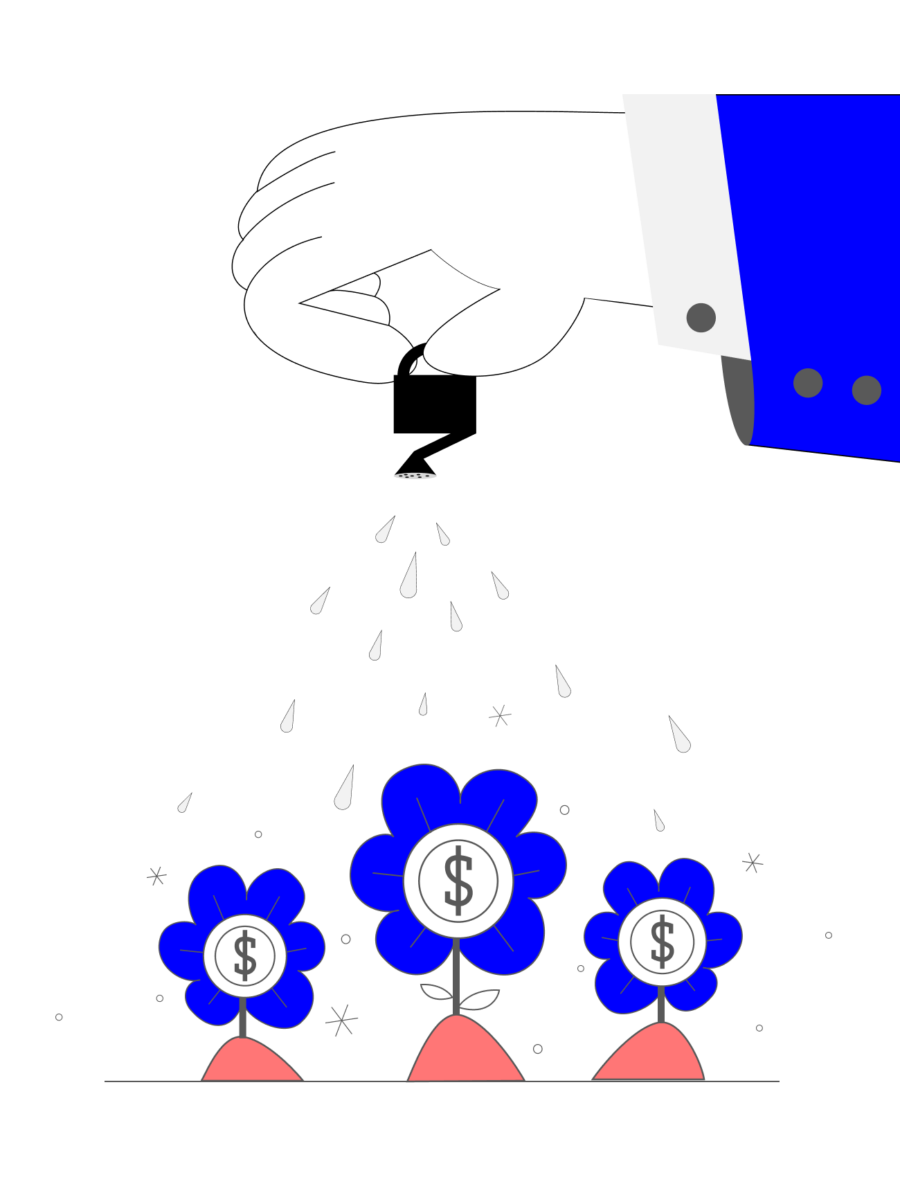
Key Features Law Firms Must Look for in Customer Growth & Development Software
Co-authored by: caseresearch.ai
First of all, let’s clarify what we mean by customer growth and development.
One might think that this activity involves attracting new clients and thus, growing the customer base. Whereas many law firms indeed make it part of the customer development strategy, client acquisition is not the same thing as client growth.
Client growth implies the cultivation of existing client-attorney relationships by predicting and satisfying the client’s emerging needs — which is no small undertaking. If a lawyer wants to be really helpful to their client, it’s not enough to call and check on the сlient’s legal health once a month. Instead, a lawyer should stay on top of what’s happening to their client at all times, every day. This way they can spot the problem early on and nip it in the bud before its legal impact gets too serious.
Why is client cultivation so important for law firms?

According to BTI Consulting Group, 23% to 75% of new business is provided to law firms by existing clients. Also, another study says that by driving customer retention and growth, firms can add more than 25% to their overall profits. But this is only one side of the coin.
In the 2023 Report on the State of the Legal Market, Thomson Reuters pointed out that law firms will likely face multiple challenges this year, including falling demand and changing client preferences. Due to tighter economic uncertainty, clients grow more price-averse and pickier in their search for a perfect balance between cost and quality of legal counseling. What does it mean?
You can’t afford to let things slide when it comes to promoting your legal services. Good-old word of mouth will no longer do the job as expected. To be sitting pretty in a highly saturated legal market, you need to start adopting a strategic approach to customer development and try somewhat different ways of doing business.
Four-step framework for customer growth (inspired by Steve Blank)
The customer development process will vary from business to business. But for the purpose of this article, I suggest we focus on the methodology coined by Steve Blank, an American entrepreneur and best-selling author.
Although Blank’s customer development model is meant to help startups unlock the demand for certain products in the market, I dare to suggest that law firms can use it as a basis for client growth as well.
Discovery

Original framework
Goal: to find out who your customers are and what essential problem you are solving.
How can law firms use it for client growth?
You know your clients — that’s half of the battle. But, you have no idea what kind of legal help you can offer at any moment to keep the client loyal to your law firm. In order to learn this, you need to know what’s happening to your client and whether there’s any legal challenge looming on their horizon.
Discovery methods:
- Talk to clients
- Monitor the publicity around them
- Track changes in the industry of their operation
- Be in the know of relevant law updates
Once you have enough information about the client’s current legal health, you will be able to spot the opportunity areas and offer an appropriate solution to the client.
Validation

Original framework
Goal: to field-test your solution by selling it to the early customers; this experience will then become a strong foundation for sales scaling.
How can law firms use it for client growth?
The beauty of gathering client intelligence is that you, as an expert, can notice the legal implications of news and trends for your client early on — often, before the client learns about the problem themselves. That’s why at the validation stage, I suggest you focus not on selling your services in its genuine sense, but on proving that these services can really help the client. For this:
- Articulate a potential client risk
- Back it up with relevant cases from your portfolio
- Formulate your proposition
- Present it in the form of advice, not a sales pitch
Normally, the client responds positively to such initiatives and starts seeing you as a trusted adviser.
Creation

Original framework
Goal: to build on the success of initial sales by fostering demand for your product or service.
How can law firms use it for client growth?
Now you know that the strategy works, so continue adding value to the client and their business. There are certainly more untapped opportunities in the longer run. To not overlook them, make your growth efforts a regular activity.
Building

Original framework
Goal: to evolve from a startup into a mature company.
How can law firms use it for client growth?
This is where you need to scale your customer growth strategy and start adopting it company-wide. To get the job done quickly, with minimum nonbillables spent, the process has to be automated as much as possible.
This brings us to the next section of this article.
Customer development tools: Key concepts & Features

The long-term client-attorney relationship is largely based on trust — and not to the company itself, but to a particular lawyer. And as long as the client’s trust is maintained, the relationship yields fruitful results for a law firm. Yet, this puts too much pressure on the attorney. Along with their typical routine — a quite busy one, I must say — they need to dedicate extra time to growing customers.
While large practices will likely have a separate team of customer success managers or paralegals to get the customer development process going, attorneys in small and medium law offices must tackle it on their own, which consumes a lot of their precious time — unless the attorney uses the right customer retention and growth software. But today, you have more software choices than ever, and each product promises to be your key to success. So it’s easy to get lost in this ocean, especially if you are a non-techie.
Below, I’ll focus on the 3 most common types of customer growth software used in law firms.
Client relationship management
CRMs are designed to help law firms better handle clients’ data, keep track of their interactions with attorneys, and analyze their preferences. Simply put, it is a central hub for all your internal client records that you can conveniently access at any time.
What customer growth needs does it cover?
CRMs improve the quality of client-attorney relationships and make them more personalized. By following the history of interactions, the lawyer can easily adjust their communication style and approach based on the client’s preferences, timely respond to feedback, and never miss any new inquiry.
Must-have features:
- Storing and managing the client’s contact information
- Keeping track of client emails, messages, calls, or any other type of communication
- Setting and tracking tasks performed for each client
- Organizing documents received from or sent to the client
- Generating performance reports and analytics
External impact monitoring
This can be any intelligence gathering tool that will keep you informed about your client’s activities, interests, reputation, as well as events that might impact the client’s legal health.
What customer growth needs does it cover?
With such software, you can timely spot and respond to issues or crises that may have legal implications for your clients. By doing so, you prove your value as a legal partner, and as a result, build trust and foster client loyalty.
Must-have features:
- Tracking client mentions across news articles, social media, blogs, etc.
- Monitoring laws, regulations, and court rulings
- Monitoring industry trends
- Customizing a news feed in accordance with the lawyer’s area of expertise
- Getting notifications/alerts to a preferred medium
Account engagement
This one is sales & marketing software in its pure sense. It helps law firms direct promotional efforts toward both existing and potential clients. Account engagement software tracks clients’ behaviors and interests across various touchpoints in the funnel, based on which you can shape a relevant sales offer.
What customer growth needs does it cover?
Account engagement software provides valuable information about the client’s intents at different stages of their interaction with your law firm. You can use it as a signal for cross-selling additional services, and as a result, benefit from relationships with the client over a longer term.
Must-have features:
- Categorizing clients based on certain criteria like revenue, project type, areas of legal interest, etc.
- Measuring client engagement at different stages of the marketing funnel
- Ability to set up personalized marketing efforts via various channels
- Visualizing performance and identifying gaps through analytics and reporting
Which one to choose?

By this point you may have attained one critical insight — no single software can completely cover a full-cycle growth and retention process. Client development is complex and multi-faceted, and dedicated software can only facilitate it by automating separate activities involved in it. That’s why before investing in any software, you must first identify the exact need you are trying to meet.
What tasks and processes do you want this software to facilitate?
Don’t proceed with the next steps until you have a clear answer to this. Ever. Otherwise, you will end up with a tool that is useless and doesn’t help you achieve important goals, or you will overspend on software that has more features than you actually need. The issues you are looking to solve frame the requirements for the appropriate functionality of a customer development tool, so it’s critical to know the exact work areas that you want to improve.
Technical consulting is one of the most requested services at CXDojo. We help companies define their tech strategies, automate business processes, or simply fix inefficiencies in their workflow. You, as well, can see for yourself how to effectively achieve goals with the tech offered by our expert team!
Author
back to all postsOUR RECENT PROJECTS
 Product launch with agile methodology
Product launch with agile methodology
- social platform
- iterative development
- user testing
- continuous improvement





